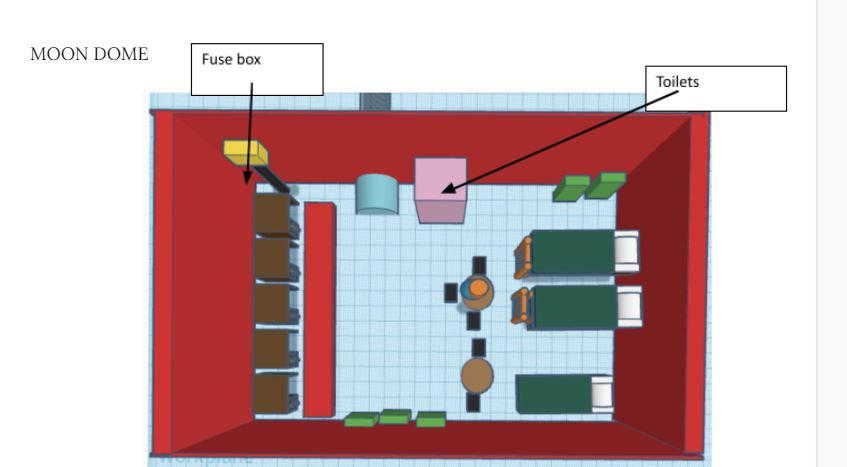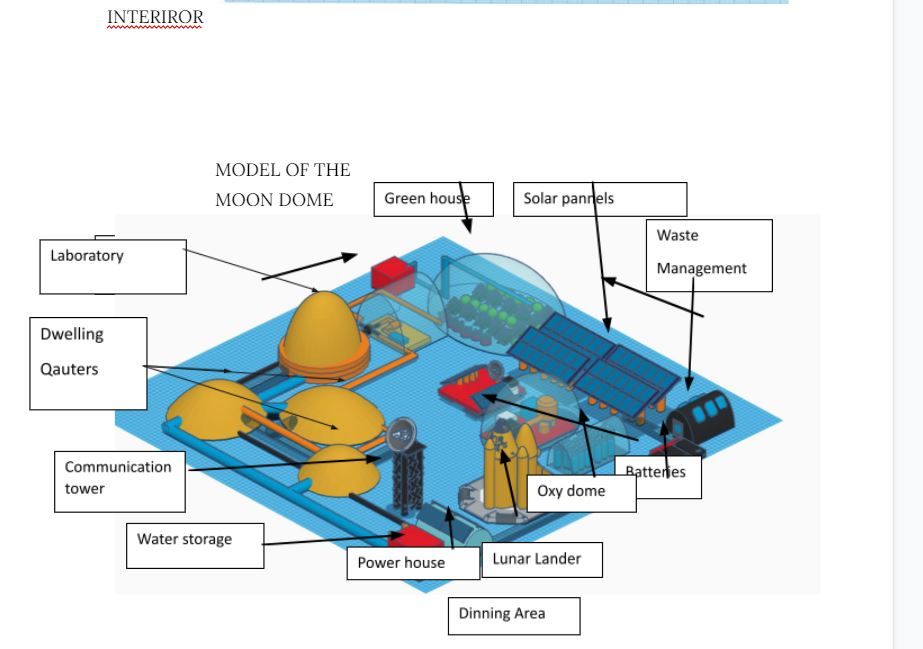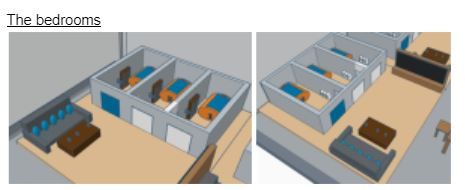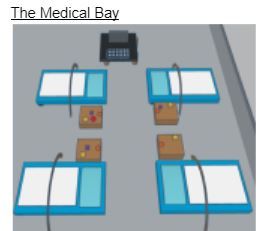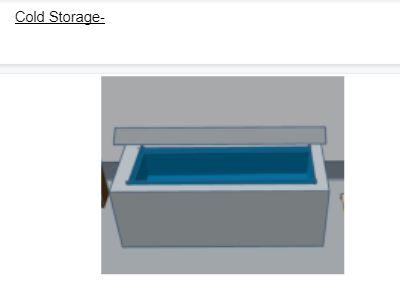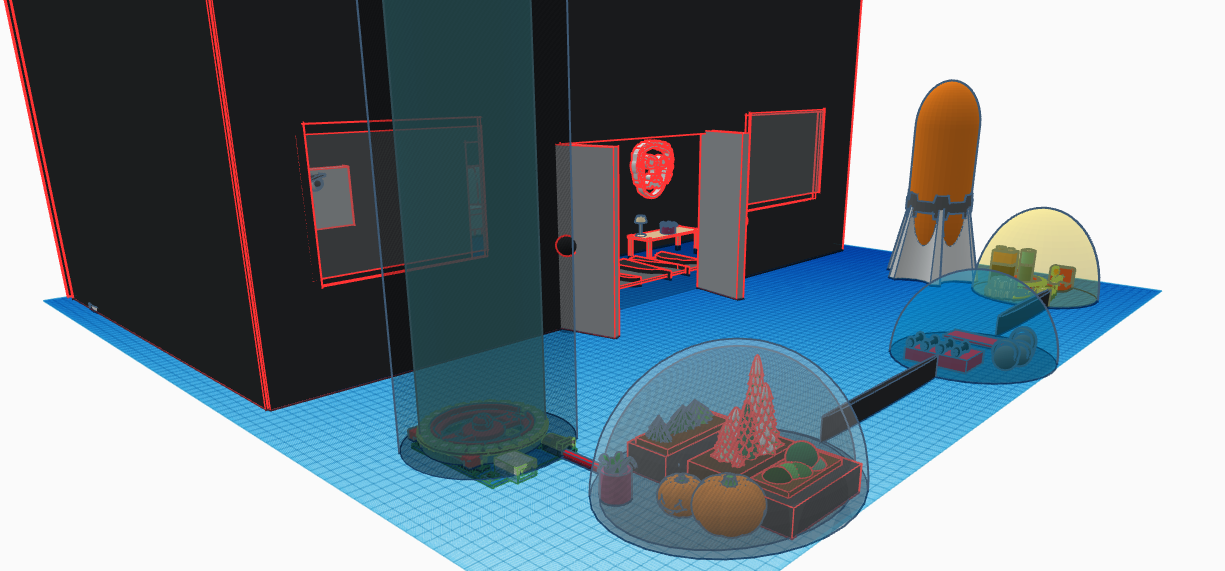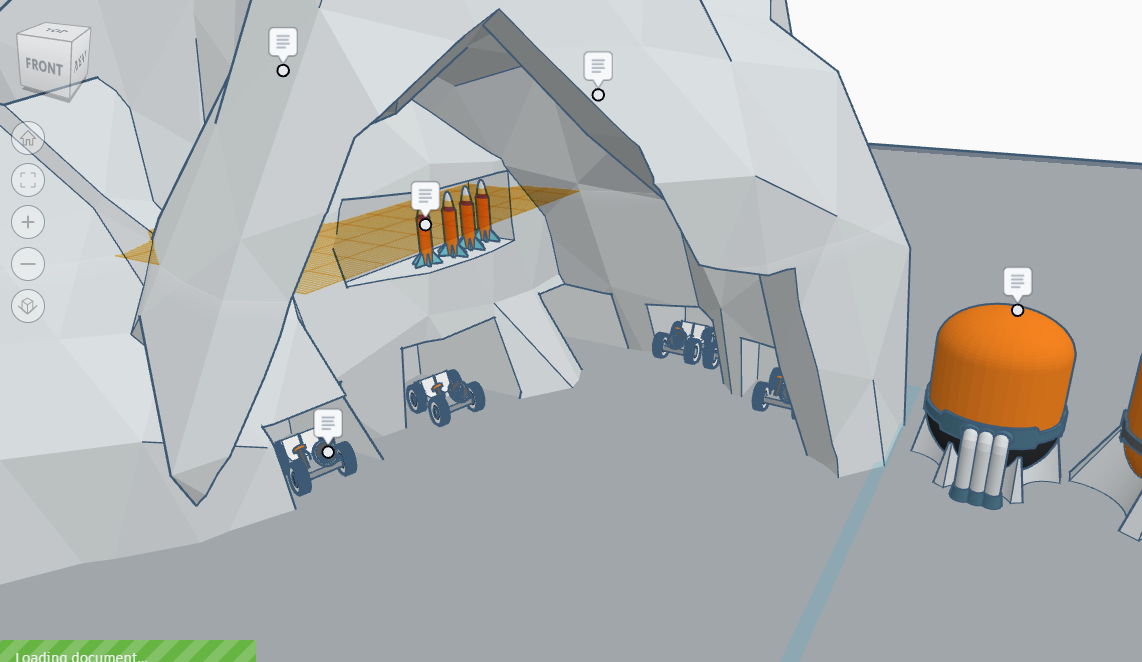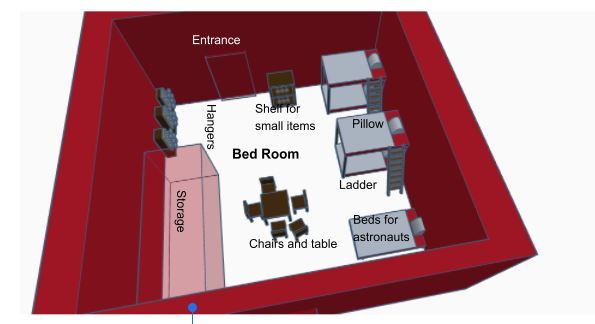Moon Camp Explorers Gallery 2021-2022
In Moon Camp Explorers each team’s mission is to 3D design a complete Moon Camp using Tinkercad. They also have to explain how they will use local resources, protect astronauts from the dangerous of space and describe the living and working facilities.
Team: Mass
Givemefive.ai Bangalore India 9, 10, 13, 10 4 / 2
External link for 3d
|
Project description
Mass means “moon” in Hindi. We have 4 crew members on board. They are professional space travelers. There are two astronauts from ISRO and two from ESA. The mission is for ~150 days depending on the status. Our moon camp has two dwelling quarters which are fully equipped to stay for three months or any longer periods of time. We also have a lab with a power station, water purifier and more. We also have an OxyDome which has a solid fuel oxygen generator. There is an electrolysis method to extract oxygen along with an oxygen storage tank. Our camp also consists of a greenhouse where the astronauts would be able to grow food and also use oxygen released by the plants and algae. The work carried out on the moon will be collecting lunar samples to study them if we can live on the moon, whether there was life on the moon in the early times. Hence, we are going to experiment on this. We have a special rover which is solar powered and can go down in any tubes or craters. We will also experiment on the different modes of transportation on the moon. We will try to study the regolith and get oxidizer and metals for the rocket on the moon. Moreover, we can make good use of vacuum to launch spaceships to different planets from the moon as there is no gravity and no atmosphere making propulsion of rockets easier as less power is consumed. |
||||
|
Where do you want to build your Moon Camp?
North Pole Why did you choose this location?
The temperatures near the North Pole are between -50°C and 0°C. There is lot of water available at the poles.
How do you plan to build your Mooncamp? Which materials will you use?
We are using a 3D printer to build a moon dome. We have used the regolith to print the bricks for construction. We also carry some material from the earth for construction. The materials to be carried are:
There are two hollow structures, which will be made up of hardened glass. This is used at: the horticulture area/dome where plants grow and the passageway connecting the dwelling quarters, the horticultural area and the custom Laboratory. |
||||
|
Water
|
Food
|
Electricity
|
Air
|
Protection
|
|
We used the Aqua Factorum method to extract water. |
Astronauts eat vegetables grown using hydroponics and meat grown by tissue culture in laboratories. |
The source which we will be using for power is solar energy. It helps to power up rovers, computers, 3d printing machines and more. The 3d printing machine will get power from the solar panels. The plant will be located where the sun shines directly on the moon so that the camp will not have any power fluctuations while the people are working. A lunar day lasts for 14 earth days which generates a lot of power. The advantage is that it is a renewable source of energy. |
Air is a mixture of particles and gases which all living things breathe. Most astronaut’s and launch vehicles carry their own oxygen. An oxygen candle is a device which produces oxygen when breathable air (OXYGEN) is scarce in space, electrolysis, the process by which electric current is passed through a substance to effect a chemical change. |
The materials used for it are silicon, granite, marble and cement. We chose these because silicon is an element found on the moon, granite powerful and strong, marble is a beautiful and infinitely working material and cement from which a house or building stands. We would be having 2 layers of mud and silicon. We will shoot the bigger meteoroids. |
|
Describe a day on the Moon for one of your Moon Camp astronauts
The time zone followed in the base camp will be the Indian time zone. The astronauts will wake up at 6:00 in the morning. The work the astronauts would do on the moon base camp will be the following: The astronauts will have to check up with the fellow crew members and inform them with the oxygen supplies, the camp parameters, make a list of what should be gotten from the earth, and meetup with other crew members to make the list mentioned above. The different types of astronauts aboard on the moon base camp:
|
||||


